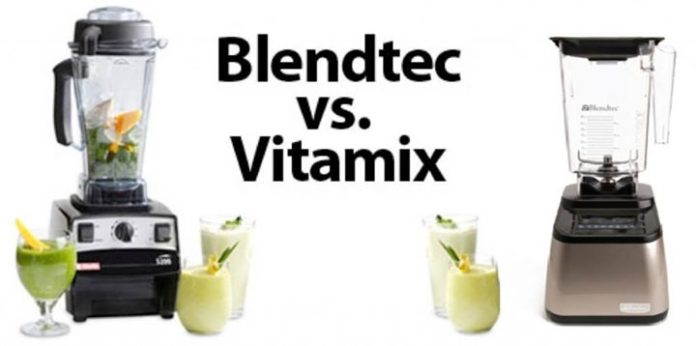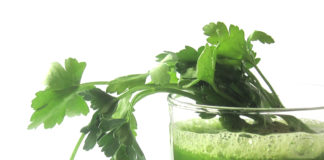This is a reprint of my legacy article from over 10 years ago covering the world’s best blenders available at that time, Blendtec and Vitamix. Both have brand new models available now that are even more amazing.
- CLICK HERE for the classic Vitamix TurboBlend (comparable to the 4500).
- CLICK HERE for the newest Vitamix Ascent Blenders.
- CLICK HERE for the classic Blendtec 575 Blender.
- CLICK HERE for the newest Blendtec Designer Blenders.
Two Different Designs Serve Two Different Needs!
Everyone tries to compare these two champions head-to-head, as if one is better than the other. But this is like comparing two great fighters to decide which one is better – the one with more power or the one with faster hands. In some matches, the fighter with more power will win. In others, speed is the deciding factor. For other people, either champ can deliver a knockout punch!
Choosing between the world’s best blenders, Blendtec and Vitamix, is sort of like that. Blendtec is sort of a power hitter. Vitamix has faster blades. In some situations, power is what you need. In others, blade speed works best. So it all depends on who you are and how you work rather than any particulars like blade speed or horsepower.
These two championship blenders work on entirely different principles so you may want to match how you work with how the blender is designed to work in order to make an intelligent choice. For that you have to understand the overall design concept for each blender. Both Vitamix and Blendtec are fine-tuned to match the horsepower of the motor to the blade speed (RPM’s), carafe design, blade design and intended user experience! Each is a champ in it’s own right.
My First Blender
![]() Many years ago I had what I thought was a good quality low-cost blender. But I constantly struggled with it for making raw smoothies. I probably spent twice as long on every smoothie, from having to chop ingredients before adding them to the blender to having to stand there and shake the blender to get things to mix. I could spend 20 minutes to make a smoothie that now takes less than half the time with a high-end blender.
Many years ago I had what I thought was a good quality low-cost blender. But I constantly struggled with it for making raw smoothies. I probably spent twice as long on every smoothie, from having to chop ingredients before adding them to the blender to having to stand there and shake the blender to get things to mix. I could spend 20 minutes to make a smoothie that now takes less than half the time with a high-end blender.
Much worse, I also used to throw out a lot of nutrition! I did terribly wasteful things thinking they were just part of what it takes to make a smoothie, from cutting the tops off strawberries or tossing pineapples cores in the trash to carefully removing many of the edible seeds. Now I just toss everything in my high-power blender and it all gets blended up into the smoothest most delicious smoothies you’ve ever tasted!
With my old blender I just put up with lumps in my smoothies. I thought it was normal! But those lumps – the unblended ingredients in my smoothie – were globs of valuable, expensive organic veggies or fruits that never going to get completely broken down and digested. You see, an inefficient blender WASTES NUTRITION, WASTES TIME and WASTES MONEY!
If you are interested in a healthy diet, especially raw food, and are still struggling with a typical consumer blender, you are probably frustrated with like I was. Ordinary consumer models just don’t cut it for raw pates or thick green smoothies! And the idea of spending $4-500 or more for a blender isn’t palatable at all…until you realize that a high-end, high-power blender quickly pays for itself when you stop wasting money and nutrition!
Healthy Competition: High-End Blenders
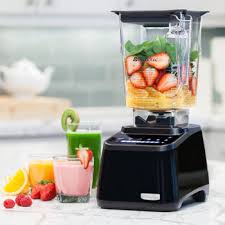 After reading all the articles about these blenders that I could find, I learned that nobody is actually giving you the real scoop! That’s what happens when articles and web sites are written to sell you something rather than provide useful, factual and relevant content that educates you to make your own informed choice! Instead you get a bunch of personal opinions and product specs that just ends up making you more confused than ever!
After reading all the articles about these blenders that I could find, I learned that nobody is actually giving you the real scoop! That’s what happens when articles and web sites are written to sell you something rather than provide useful, factual and relevant content that educates you to make your own informed choice! Instead you get a bunch of personal opinions and product specs that just ends up making you more confused than ever!
Of all the blenders on the market, there are only two brands that stand out as the world’s best blenders by professionals, from raw food authors and teachers to professional chefs. First, there are the popular Vitamix blenders. A venerable stainless steel Vitamix 3600 was my first high-power blender, purchased over 20 years ago. For decades Vitamix was the only choice. Today it is still preferred by people who insist on total manual control.
Then Blendtec came on the scene with the Designer series featuring more horsepower and a reputation for being able to blend anything from golf balls to iPods. This upstart is now the blender of choice for people who prefer automatic preprogrammed functionality without the need for a tamper.
How does a $500.00 blender make a better smoothie!
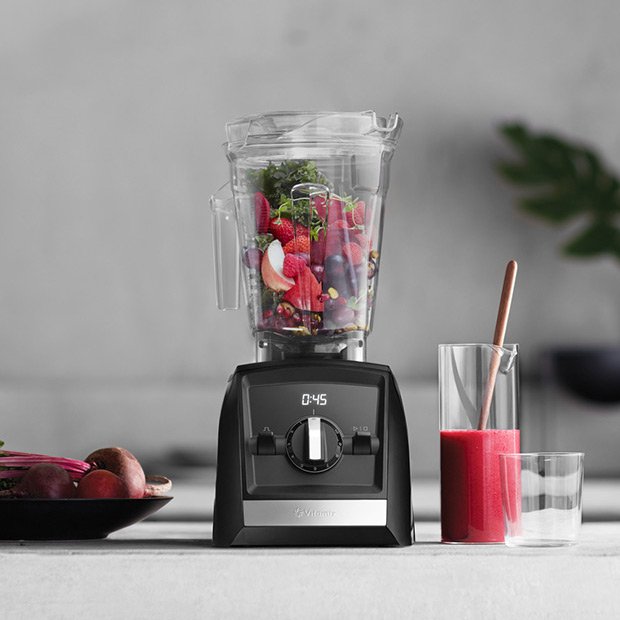 From a raw food perspective, the first thing you need to understand about the world’s best blenders is that a high-end blender doesn’t just blend or mix up what you put in it. A high-end blender does much, much more! These benders have motors is 5 to 10 times more powerful than an ordinary kitchen blender, and blades that reach tip speeds approaching the speed of sound! This is not just for show!
From a raw food perspective, the first thing you need to understand about the world’s best blenders is that a high-end blender doesn’t just blend or mix up what you put in it. A high-end blender does much, much more! These benders have motors is 5 to 10 times more powerful than an ordinary kitchen blender, and blades that reach tip speeds approaching the speed of sound! This is not just for show!
With this much speed and power, the blades in these powerful machines hit your spinach, kale, bananas, almonds and everything else with a powerful force that literally explodes the cell walls of your ingredients, instantly releasing all the dense nutrients and flavors trapped inside.
That would be hard for your stomach to do even if it wasn’t already compromised by a lifetime of consuming dead, cooked and processed foods!
However, this only happens with one of the world’s best blenders. If you make a smoothie in an ordinary blender it may mix up the ingredients somewhat, but the effect won’t be the same. Instead of blasting through cell walls releasing tons of nutrition, you’ll get liquidized vegetables but still mostly intact at the cellular level, requiring much more effort for your system to absorb.
Of all the blenders on the market, there are only two brands that stand out as the absolute best among professionals, from raw food authors and teachers like myself to professional chefs. First, there is the popular Vitamix. A stainless steel Vitamix 3600 was my first high-power blender, purchased over 25 years ago. I treasured that blender for over two decades! For most of that time, the Vitamix was the ONLY choice. Today it is still preferred by professional chefs who insist on total control.
Then Blendtec came on the scene featuring more horsepower and a reputation for being able to blend anything from golf balls to iPods. But to determine which blender is the best for you, especially if you are enjoying a raw food lifestyle, you have to look further than horsepower and golf balls.
Vitamix and Blendtec are not really competing directly!
The first thing everyone looks at are Product Specifications. However, the specs don’t tell the whole story. For example, most people assume that a 3 HP motor is better than a 2 HP motor because it seems more powerful. But that isn’t true at all. The truth is that it you have to understand the overall design, from how the blade design and speed interact with the the design of the carafe and control system. The Vitamix and Blendtec are not competing directly at all! They are actually two entirely different philosophies of blender design – and will mostly appeal to entirely different groups of people. The right question to ask is not which is the best blender but which is the best for you! With that in mind, let’s looks at the specs.
Power vs. Speed
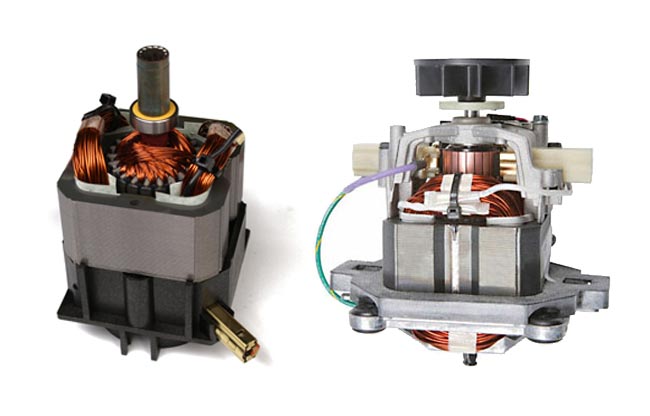 Vitamix has a long history. Many people that have been loyal Vitamix fans for decades. Their blenders are often preferred by professional chefs who prepare dozens of thick, dense recipes daily. In a commercial kitchen, chefs prefer more manual control. A chef often wants to be able to manually control the speed and texture of his mix as his uses the famous Vitamix Tamper tool to push ingredients down into the blades carefully. Vitamix also has 4 star-shaped blades that are sharper, cutting through the ingredients at 39,000 RPM. The carafe is tall and fluted, concentrating the ingredients in a narrower space and along the fluted curves for easy reach with the famous Vitamix Tamper tool. This combination of elements requires about 2 horsepower for the most efficient blending. In fact, too much horsepower could actually make it less efficient! In a Vitamix the Tamper can freely move in and out of the container during blending. The Vitamix tamper is designed to be used ALL the time since the fluted container is actually designed to concentrate the ingredients towards the tamper tool during blending.
Vitamix has a long history. Many people that have been loyal Vitamix fans for decades. Their blenders are often preferred by professional chefs who prepare dozens of thick, dense recipes daily. In a commercial kitchen, chefs prefer more manual control. A chef often wants to be able to manually control the speed and texture of his mix as his uses the famous Vitamix Tamper tool to push ingredients down into the blades carefully. Vitamix also has 4 star-shaped blades that are sharper, cutting through the ingredients at 39,000 RPM. The carafe is tall and fluted, concentrating the ingredients in a narrower space and along the fluted curves for easy reach with the famous Vitamix Tamper tool. This combination of elements requires about 2 horsepower for the most efficient blending. In fact, too much horsepower could actually make it less efficient! In a Vitamix the Tamper can freely move in and out of the container during blending. The Vitamix tamper is designed to be used ALL the time since the fluted container is actually designed to concentrate the ingredients towards the tamper tool during blending.
The Blendtec design team took an entirely different approach, opting for slightly less speed but a lot more power and automation. This is great for people who want to just push a button and just let the bender do its thing — completely without any need at all for a tamper tool. The powerful 3 horsepower motor drives the 2-pronged blades, which are designed purposely with a relatively dull edge, into the ingredients at about 28,000 RPM — smashing open the cell walls of your fruits and vegetables. With a bigger motor, these blades are slower but have more power behind them, like a car going uphill in 1st gear.
Next, a large, wider and shorter square carafe, designed to take advantage of all that power. creates a strong vortex inside the carafe that sucks everything down into the blades without the need for a tamper. You just push a preprogrammed button and walk away. If you need to you can use the speed control for a little more manual control. You can even buy a special tamper tool online to fit your Blendtec if you really want one — or just make your own from a strong wooden dowel. However, I have been using my Blendtec for many years and always get perfectly smooth smoothies every time without ever needing a tamper. The large blade and square pitcher design does just what the sales literature says — pulling all the ingredients into the blades with a powerful vortex.
Occasionally, I will make a green smoothie with four or more large handfuls of greens and I’ll need to “pulse” the blender a few times or shake the pitcher a bit to get all the ingredients cycling into the blades, but I won’t have to stand there the whole time pushing the ingredients down with a tamper.
A larger, 3-quart pitcher is also available through Blendtec that has a larger, 4-inch blade and handles more capacity.. If you think you’ll be making a lot of smoothies with entire bunches or heads of greens (or you’re making smoothies for more than 2 people), I highly recommend opting for the extra,larger 96 oz. pitcher. The standard pitcher, however, is definitely adequate for most people.
The Blow-by-Blow Details
Minimum Authorized Price: Vitamix and Blendtec are both high-end, high-speed, powerful blenders. The base models, which I recommend most often, usually sell for under $500. The Blendtec, however, comes with everything you need to blend both wet and dry ingredients. Vitamix, due to the narrower, fluted design, has a separate dry pitcher for grinding grains into flower and blending other dry ingredients, which is sold separately. Both Vitamix and Blendtec offer a 7 year warranty — longer than any other blenders I have seen.
Power/Speed: The Vitamix blender features a 2 horsepower motor that spins up to 39,000 rpm. The Blendtec blender features a 3 peak horsepower, 1560 watt motor that spins it’s blade up to 29,000 rpm. However, because of the less powerful motor in the Vitamix it can slow down significantly during a thicker blend. Blendtec’s greater horsepower means that is “goes uphill in low gear” better than the Vitamix, maintaining blade speed in even very thick mixes.
Warranty: Both Vitamix and Blendtec have a 7-year warranty that covers the entire machine, so this is a tie between the two machines.
Durability: Both Blendtec and Vitamix feature break-resistant, BPA-free, copolyester pitchers, stainless steel blades and durably-built base. Both will pulverize hard materials such as ice, frozen fruits, nuts, seeds, grains and coffee beans, though for dry ingredients you need to buy a different blender for the Vitamix.
NOTE: recently some folks have complained about using ANY plastic containers at all out of fear of contamination from toxic chemicals. I have researched this thoroughly and can tell you that this concern doesn’t seem to be a real issue at all. Virtually ALL, every single one, of the studies done that show any problems with Tritan plastic that I have carefully read use extreme hot ingredients, over 104 degrees, and ridiculously long exposure times, over TEN DAYS, to get even a negligible result, Using these products safely and as directed would never create that kind of exposure or problem. Even if there was a very slight possibility of some miniscule exposure to something that may be toxic under some laboratory conditions, the MAJOR health benefits of the delicious, organic, nutritious smoothies I drink every day far outweigh any of that by miles!
Dimensions: Blendtec is shorter at 15 1/2 inches tall with pitcher, which means that it can fit under most kitchen cabinets. Vitamix blenders are taller at 20 1/2 inches with pitcher, so it will take up a little more space in your kitchen and might not be able to fit nicely under your kitchen cabinets. The width and depth are pretty similar but the Blendtec, with a bigger motor, weighs 12 pounds vs. Vitamix’s 10 pounds.
Pitcher/Carafe: Both blenders come with a 64-ounce pitcher made from a durable, break-resistant plastic called Tritan, which is BPA-free. Unlike the Vitamix, the Blendtec blade is part of the pitcher, so if the pitcher should need replacing, you’re also replacing the blade. Of course, the blade assembly is guaranteed for life, so if it needed replacing it wouldn’t cost you a thing, New Blendtec pitchers are also fairly inexpensive, available online for under $60. Blendtec also has a 96-ounce pitcher that you can buy separately, or is included at a good discount if you order it with the Combo option.
The wider, square Blendtec pitcher design also makes it easier to pour smoothies and scrape out thick mixes like salad dressings or nut butters. The pitcher is easier to clean, as well. With the Vitamix, on the other hand, it can be more difficult to scrape out all the ingredients caught beneath or around the blades in it’s narrow, fluted pitcher design.
Controls – Preprogrammed vs. Manual: The Vitamix at this price point features a manual switch and dial interface for more precise, manual control of your mix. One of the problems with dials and switches, however, is that they can be hard to clean. Blendtec features a preprogrammed push-button interface which wipes clean easily. You can set speeds manually when needed by pressing the “up” or “down” buttons, but for most things you just push a button and walk away.
Tamper Tool: Vitamix includes a tamper which pushes the ingredients down the fluted sides and into the blades of the blender. This gives you more manual control, which some serious cooks and gourmet chefs prefer. Blendtec, however, is designed to create a vortex in the pitcher that sucks all the ingredients down into the blades without the need for a tamper. In my experience, smoothies blend perfectly in the Blendtec without the need for a tamper. It really does pull all the ingredients into the blades. For thicker blends you may need to hit the pulse button a couple times before running the smoothie cycle. I can certainly live without a tamper but if you need one you can find a custom, aftermarket tamper for Blendtecs on eBay very inexpensively.
To make your own tamper tool use a 1 inch Poplar wood dowel and a 3/16 inch wood dowel from your local lumber yard or hardware store. Measure from the top of the blade inside the container to the top of the lid when in place on top of the container, then cut your 1dowel to a comfortable length, about 12 inches. Drill a hole through the position where the 3/16 inch dowel will be placed through the lid (in a cross), then cut your 3/16 inch dowel to about 6 inches or so. Make certain that the bottom of the dowel doesn’t touch the blade.
Noise Level: The Vitamix sounds slightly less noisy than the Blendtec, but not by much – and if you push the button and walk away you won’t hear a thing anyway, whereas with the Vitamix you have to stay there and listen to it the whole time whole you’re pushing the ingredients into the blade with the tamper.
Cleaning: Both Vitamix and Blendtec are easy to clean – just put a little hot water and a drop of dish soap in the pitcher and push the pulse button for a second or two. Occasionally you may need to get in there with a brush for a more thorough cleaning. Since the Blendtec pitcher is wider and has smooth sides, it is much easier to clean than the tall, narrow and fluted Vitamix pitcher.
Blades: The Vitamix features a four-tipped, sharpened blade designed to work with the higher RPM’s of the motor to cut through the tough cellulose wall of cells. Blendtec has a dual-prong unsharpened blade designed to crash with a lot more force through cell walls using the power of it’s 3 HP motor.
Color/Design: The Vitamix is a more stylish, modern design that features a variable speed (VSD) control. It only comes in black. The Blendtec has a sleek, modern, high-tech design which is available in black, white or red.
Customer Support: While Blendtec has a very popular “Will It Blend” video campaign on YouTube, Vitamix has more information-packed content on its website that contains a forum, recipes, nutrition information and specific content catering to raw foodists or vegetarians. Vitamix generally features more healthy recipes than Blendtec. However, this isn’t a reason to choose one machine over another – you can find numerous web sites with recipes that work with either machine online.
Performance: Either blender will do amazingly when making silky, delicious smoothie . Neither one outperforms the other — they just work slightly differently. Both blenders break up the cell walls of your ingredients, unlocking the nutrients in fruit, vegetables, nuts and seeds far, far better than any typical consumer blender can. Both Vitamix and the Blendtec make smoothies, nut butters, hot soup, frozen ice cream, crush ice and grind grains. So it all comes down to how you want to work – manually, standing over the blender and nursing the mix by hand or automatically, pushing a preprogrammed button and walking away.
Who ‘s the Winner?
This is one of those age-old questions for which there is no easy answer. It’s like asking if a Apple computer is better than a Windows PC or if a Canon DSLR camera is better than a Nikon. It’s a matter of your own personal style and taste. Everyone I know who has a Blendtec loves it, and everyone I know with a Vitamix loves it, too. So study my comparisons carefully, think about how you work in your kitchen and see which one feels right for you. Personally, I used to have a classic stainless steel Vitamix which I loved for many years. For the last five years or so I’ve used a Blendtec and I love it, too – perhaps just a bit more than I loved the Vitamix. I like just pushing a button and walking away. But you won’t be disappointed with either so don’t get all stressed out over the decision – just get one of these great blenders and start enjoying healthy green smoothies and delicious raw food recipes as soon as you can!
Also Read:










